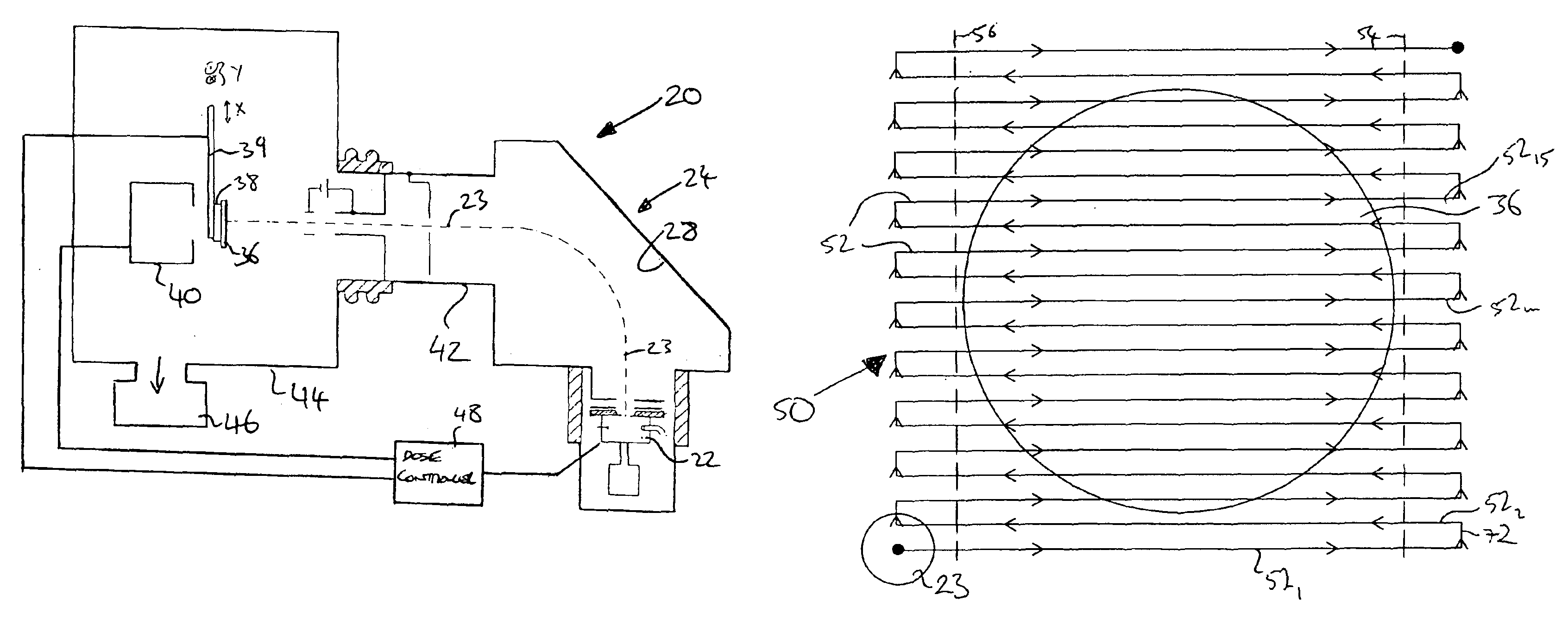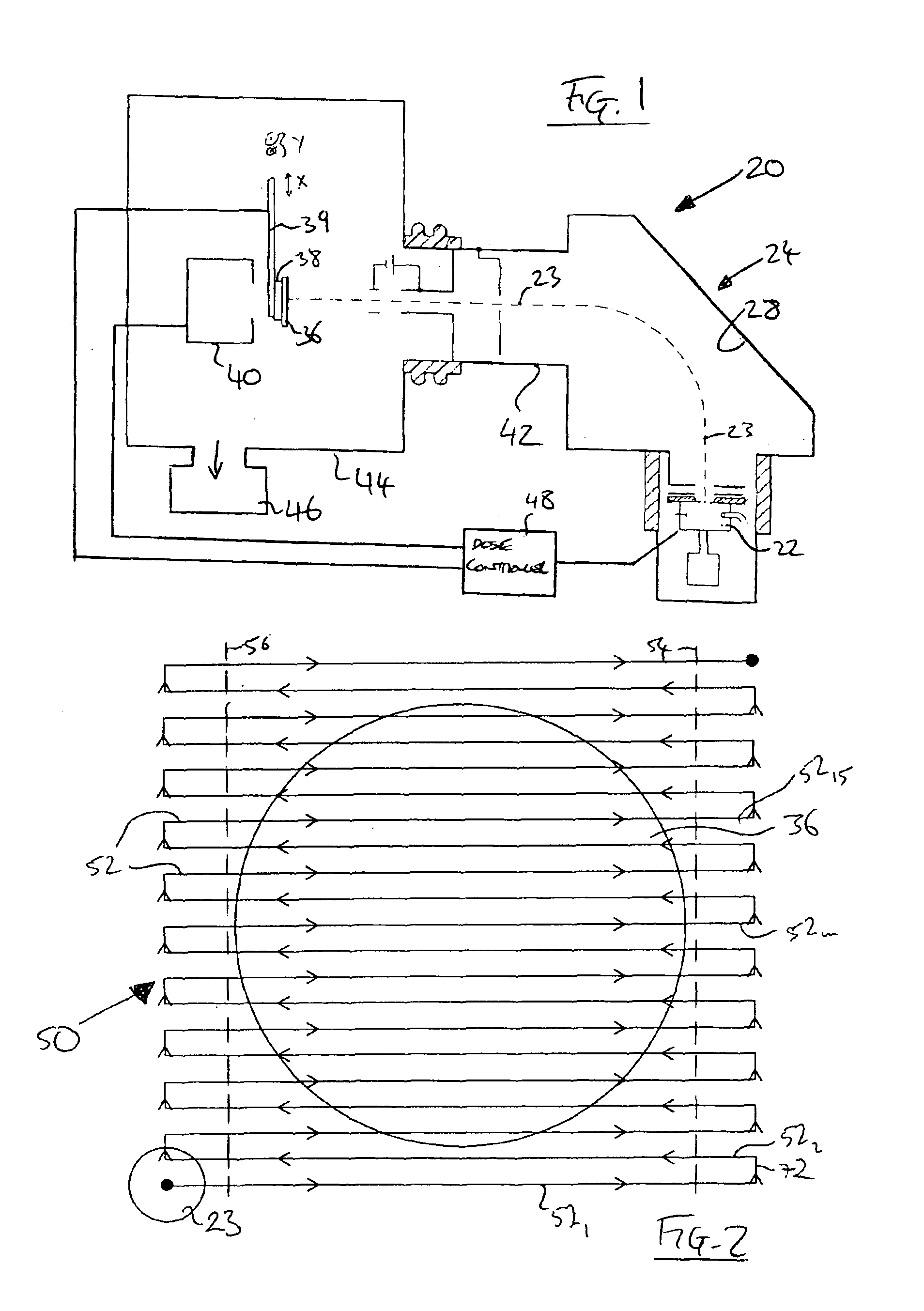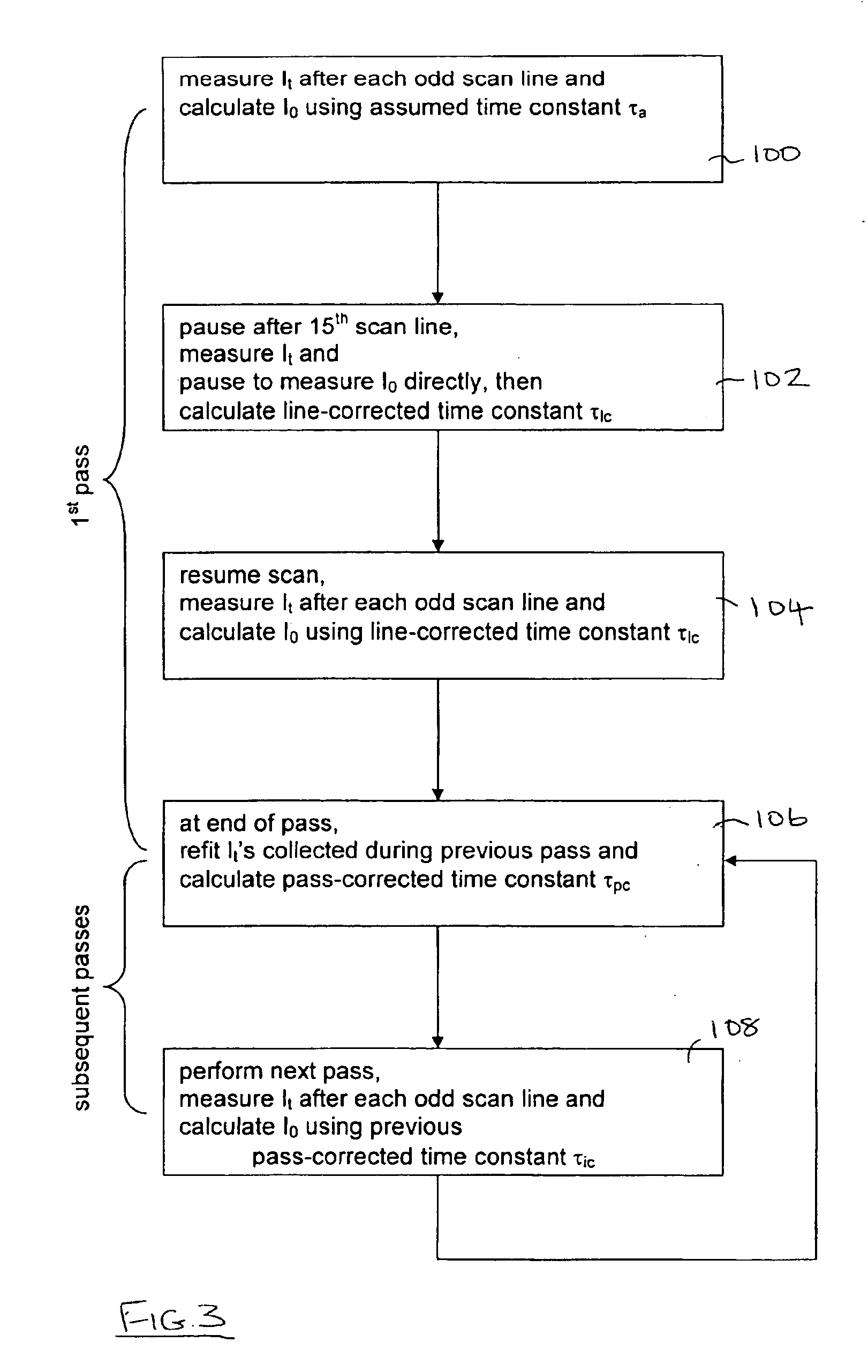Ion implant dose control
a technology of ion implants and substrates, applied in the direction of irradiation devices, table equipments, nuclear engineering, etc., can solve the problems of high beam current measurement errors, time-consuming and expensive failure to achieve such standards, and achieve the effect of optimising pump down time and eliminating quadrature variation
- Summary
- Abstract
- Description
- Claims
- Application Information
AI Technical Summary
Benefits of technology
Problems solved by technology
Method used
Image
Examples
Embodiment Construction
The present invention can readily be illustrated with reference to such a single wafer implant machine, such as the ion implanter 20 shown in FIG. 1. However, it should be understood that the invention may also be embodied in batch implanters of the type in which a batch of wafers mounted on a spinning wheel is processed simultaneously.
The single wafer machine of FIG. 1 comprises an ion source 22, such as a Freeman or Bernas ion source, that is supplied with a pre-cursor gas for producing an ion beam 23 to be implanted into a wafer 36. The ions generated in the ion source 22 are extracted by an extraction electrode assembly into a flight tube 24 that includes a mass-analysis arrangement 28 comprising a mass-analysing magnet and a mass-resolving slit, as is well known in the art. Upon entering the mass-analysis arrangement 28 within the flight tube 24, the electrically charged ions are deflected by the magnetic field of the mass-analysis magnet. The radius and curvature of each ion's...
PUM
 Login to View More
Login to View More Abstract
Description
Claims
Application Information
 Login to View More
Login to View More - R&D
- Intellectual Property
- Life Sciences
- Materials
- Tech Scout
- Unparalleled Data Quality
- Higher Quality Content
- 60% Fewer Hallucinations
Browse by: Latest US Patents, China's latest patents, Technical Efficacy Thesaurus, Application Domain, Technology Topic, Popular Technical Reports.
© 2025 PatSnap. All rights reserved.Legal|Privacy policy|Modern Slavery Act Transparency Statement|Sitemap|About US| Contact US: help@patsnap.com



